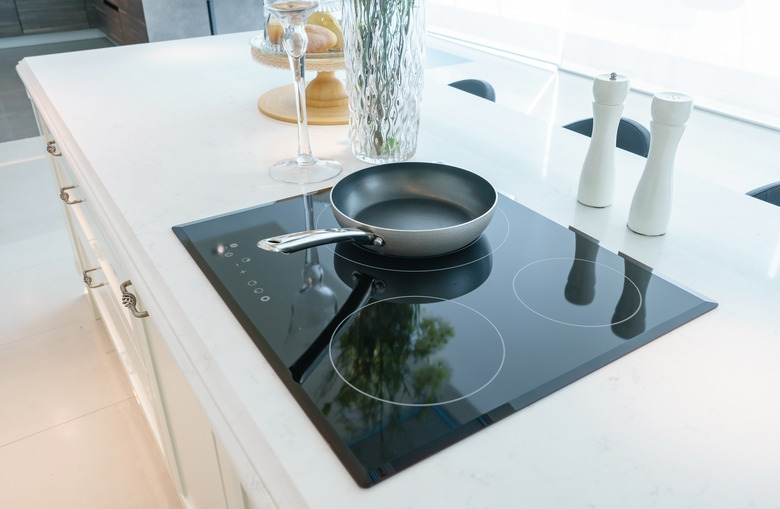How To Caulk Around A Cooktop
Caulking beneath the edge of your cooktop can cushion it and hold it securely in place against your counter. You can also apply caulk between the stove and counter to seal a gap, improving sanitation and making cleanup easier. Neither option is always necessary, though, but they're an easy DIY if you opt for them.
When Is Caulking Appropriate?
When Is Caulking Appropriate?
Before you start, take a moment to consider whether you actually should caulk around your cooktop. If you have a laminate or butcher-block counter, many cooktops come with clamps you can use to secure them in place. Stone counters and other solid surfaces shouldn't be clamped because of the risk of cracking, so the alternatives are to:
- Not secure the cooktop at all.
- Use a glass cooktop gasket, which is essentially a strip of foam mounting tape.
- Use room-temperature-vulcanizing (RTV) silicone caulking as a sealant, either under or around your cooktop.
Not securing the cooktop isn't ideal as it may shift in normal use and cause electrical or gas connections to loosen. Foam strips work to secure and cushion the cooktop but compress over time and may not continue to provide a watertight seal. Silicone provides an excellent seal but may degrade over time and can be problematic if you need to service or replace the cooktop. Even manufacturers are divided on the subject: GE advises against using silicone for many models, while Wolf/Subzero requires and provides it.
Preparing to Caulk
Preparing to Caulk
It's important to clean the surfaces before you begin in order to get good adhesion. With a brand-new installation, a quick wipe with a damp cloth or alcohol swab should suffice. If you're installing a new cooktop on an existing counter or caulking around an already-installed cooktop, you'll need to clean it thoroughly with soap and water or a commercial cleaner/degreaser to remove any food residues.
Caulk Under the Cooktop's Edge
Caulk Under the Cooktop's Edge
To use caulking under the cooktop to secure and cushion it, start by taping the edge of the cooktop itself and the counter beneath with masking tape. This is optional but speeds cleaning afterward. Next, apply hazelnut-sized mounds of heat-resistant RTV silicone caulking at 5- to 6-inch intervals around the edge of the cutout. Center the cooktop over the opening and drop it into place, pressing it firmly home.
Run the tip of a sharp knife along the edge of the cooktop to cut the tape and then lift it away, removing any squeezed-out silicone with it. If any silicone adheres to the counter or cooktop, remove it with denatured alcohol or a razor. Allow the adhesive to cure for 24 hours or as advised by the manufacturer before using the cooktop.
Caulk Between the Stove and Counter
Caulk Between the Stove and Counter
After installation, some cooktops may leave a gap between the cooking surface and counter. If you wish to caulk that gap for sanitary or esthetic reasons, chose an RTV silicone that's either clear or color-matched to your surfaces. Tape the edges of the counter and cooktop that meet the gap, taking care not to tape anywhere you wish the silicone to stick.
Apply a steady bead of silicone down the full length of one side, using a caulk corner tool to smooth the surface of the silicone. Repeat for each of the remaining sides, then cover the work area loosely to protect it from dust as the surface forms a skin. After the recommended curing time, remove the masking tape and clean away any excess silicone with alcohol or a razor blade.
